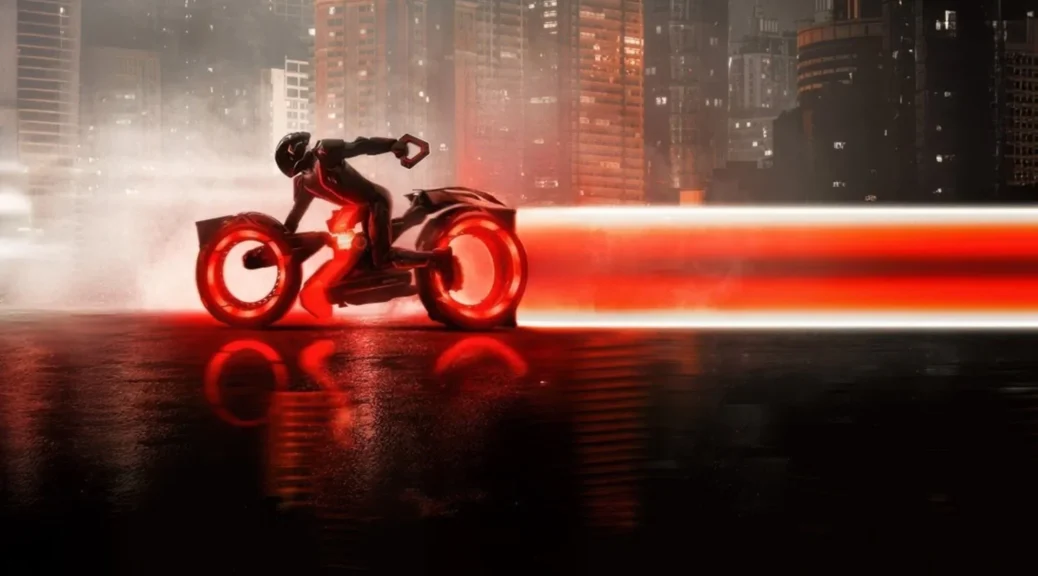Tron: Ares
by Hope Madden
Tron was a fun idea in 1982. What director Joachim Rønning’s Tron: Ares gets very right is its commitment to simplicity, impressive yet simple visual effects, and soundtrack.
Greta Lee is Eve Kim, head of ENCOM, a tech industry whose whiz kid founder vanished back in the 80s. Kim’s been working on AI that can materialize into something concrete—like an orange tree. But she’s missing the string of code that will make the thing permanent, helping her eradicate hunger and do so many other good things AI will clearly never actually be used to do.
Meanwhile, megatech competitor Julian Dillinger (Evan Peters) is materializing soldiers, of course. But their impermanence is a stickler for him as well.
The race is one to own the permanence code! Natch, Dillinger sends one of his soldiers (Ares, played by Jared Leto) to nab Kim, leading to adventures inside and out of “the grid”.
Is it dumb? Of course it is. Is it fun? Sometimes it really is! There’s a motorcycle chase that looks amazing, a gorgeous opening sequence, and visuals that manage to be both forward thinking and adorably retro—kind of a highly polished version of a tech world as imagined in the early 1980s.
Supporting turns from effortless badass Jodie Turner-Smith and ever glorious Gillian Anderson class up the joint. And did I mention the characteristically jarring, distorted and sorely missed sounds of Nine Inch Nails?
Jared Leto does his best Jared Leto, handsome and wise and weirdly stiff. Whatever. But Greta Lee is clearly better than the material, which can’t help but elevate the few scenes requiring true acting. She runs well too. And Peters is a bit of fun as our favorite punching bag, the spoiled, entitled, weak tech billionaire playboy. (He’s no Nicholas Hoult, but the performance is still solid.)
Is Tron: Ares great? It is not. But it doesn’t suck, either.


